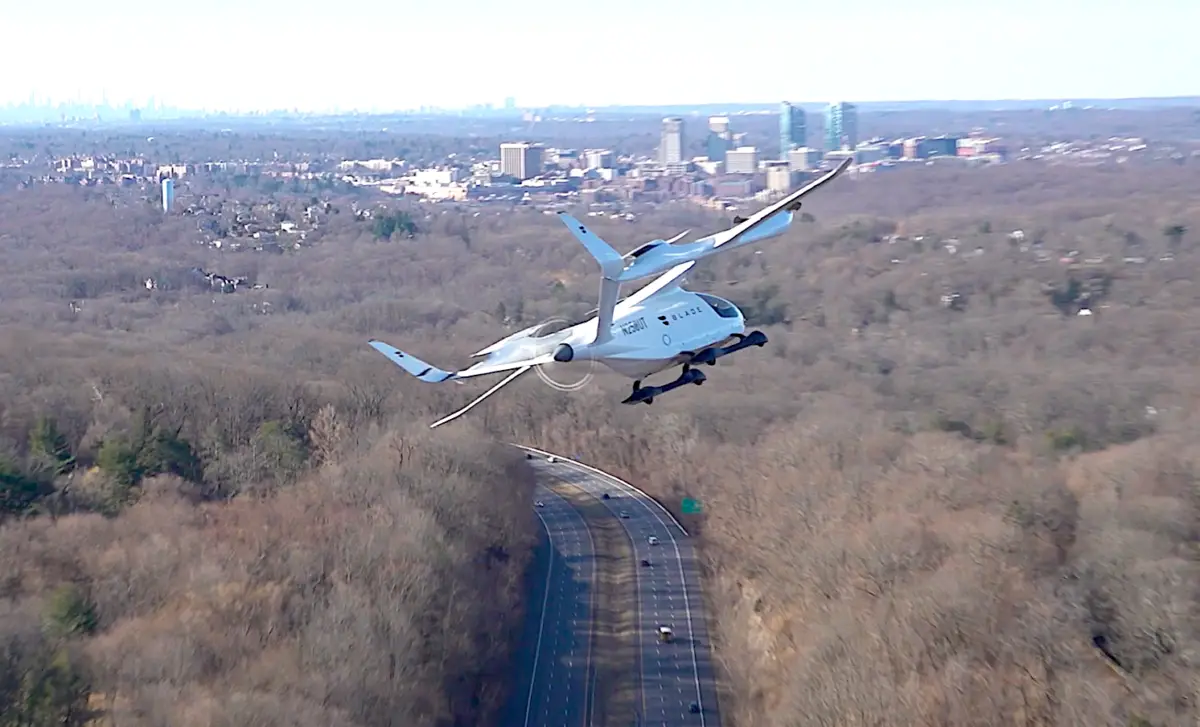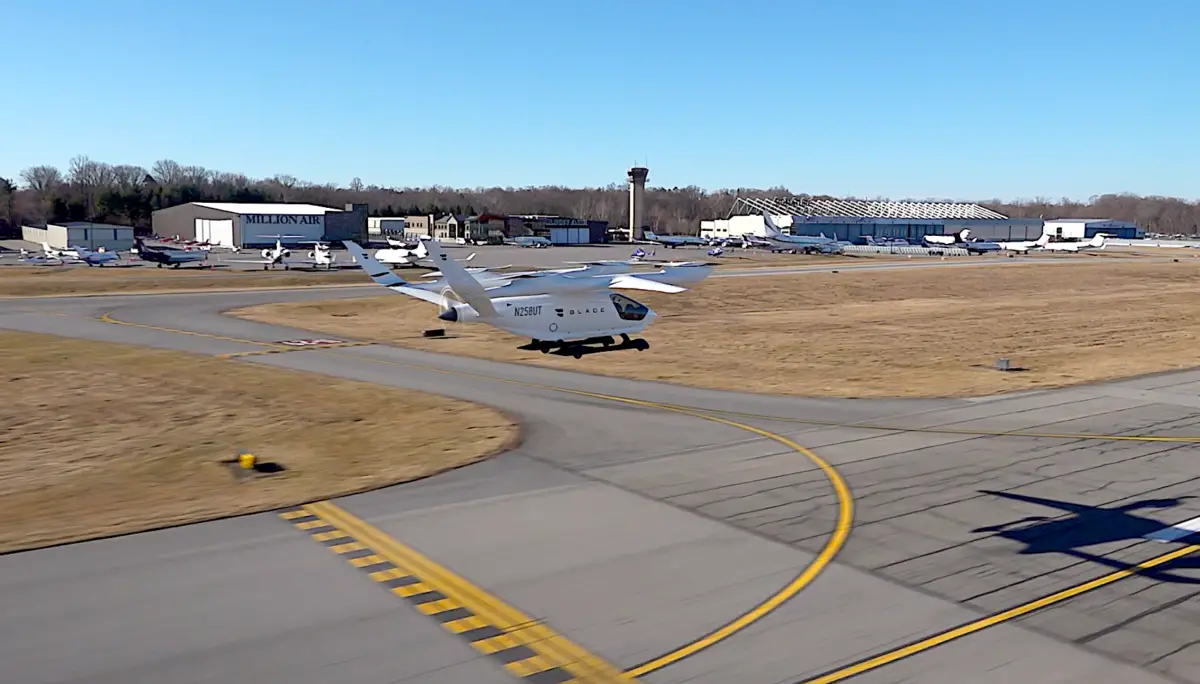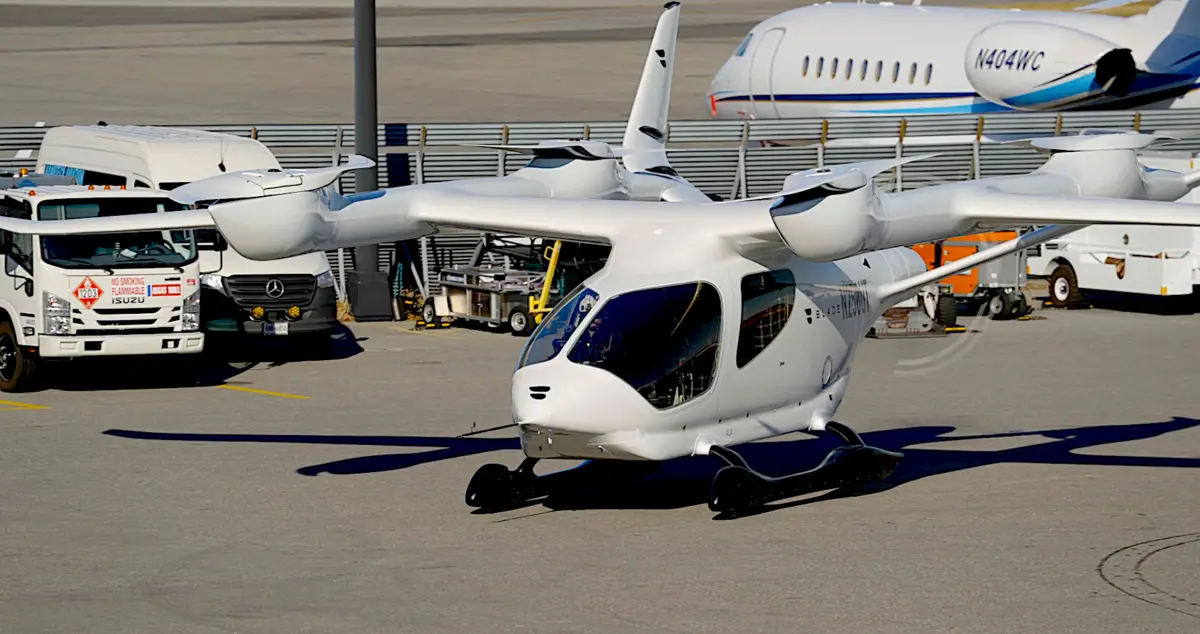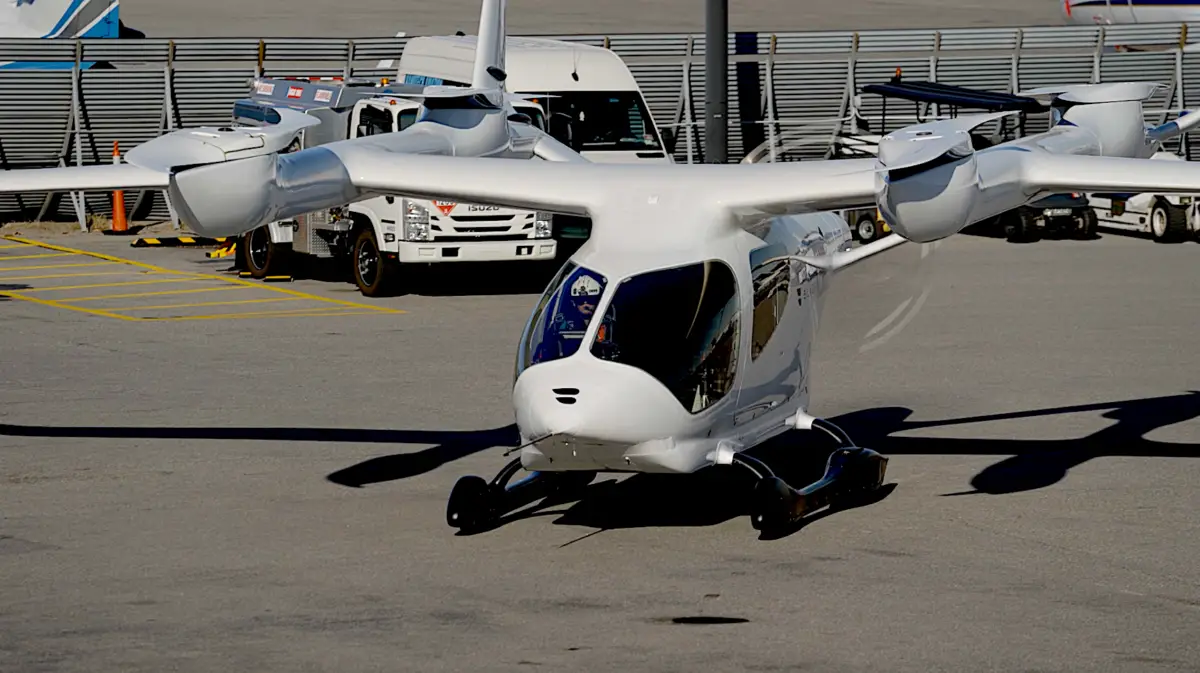Aviation revolution displayed at Westchester County Airport
Passengers patiently waiting to get through security and pilots of corporate jets patiently waiting for their flight plan clearances likely wouldn’t have noticed, but Westchester County Airport quietly earned a place in aviation history recently. The airport was the launching pad for the first demonstration flight of a piloted electric aircraft in the New York Metro area.
An ALIA-250 vertical takeoff and landing electric aircraft manufactured by Beta Technologies of Burlington, Vermont, was used in the demonstration. It was emblazoned with the logo of Blade Air Mobility, which offers helicopter flights as well as fixed-wing service at Westchester and other airports.

“The advent of electric aircraft is truly revolutionary,” Melissa Tomkiel, Blade’s president and general counsel told the Business Journals. “The aircraft are cheaper to operate, which increases the accessibility to a broader range of people, and they solve a lot of issues that exist today with current generation aircraft, specifically noise profiles and environmental concerns.”
Blade’s passengers fly by helicopter, seaplane and jet to destinations including the East 34th Street and West 30th Street heliports in Manhattan, East Hampton Airport, Nantucket, Miami, West Palm Beach and more. The ALIA-250 aircraft are anticipated to possibly be  FAA-certificated for carrying passengers by late 2024. For Blade, they could replace conventionally powered helicopters that currently carry Blade’s passengers. Blade initially anticipates having 20 of the Beta Technologies aircraft in service.

“They’re nearly silent in flight and there are zero emissions,” Tomkiel said. “There is sustainable aviation fuel that does decrease emissions in piston-powered and jet aircraft but it’s not easily accessible and expensive. Because we have built the ecosystem around urban air mobility and have been flying people for the past eight years it will be a very seamless transition.”
Tomkiel said that Blade Air Mobility has passenger business in different parts of the world including the U.S., Europe, India and Canada. She also noted that the electric aircraft would be used in transporting human organs for transplant, which is a significant part of Blade’s business.

“We’re truly a global operation,” Tomkiel said. “In New York City, for example, one of our core urban air mobility routes is flying people from Manhattan to JFK and to Newark. We do this everyday here in New York and with current generation rotorcraft. When the EVA, electric vertical aircraft are certified, they’re going to operate within the same infrastructure that currently exists. The same air carriers and operating partners we use today will then operate those aircraft and we will help accelerate that transition.”
Plans call for a cargo version of the ALIA-250 to be FAA-certificated first with a passenger version to follow. The aircraft uses four rotors on top, each turned by direct-drive electric motors. The top-mounted rotors are used to lift off vertically and to land vertically. For forward flight, thrust comes from a pusher propeller mounted in the rear. The rotors on top are stowed facing into the slipstream while the aircraft is flying forward like a fixed-wing airplane. The airplane’s rechargeable batteries are mounted in its belly. The batteries have a range of about 250 nautical miles at cruise speed depending on wind conditions. The batteries require 50 minutes to recharge. The aircraft’s maximum takeoff weight is 6,999 pounds. It has a wingspan of 50 feet. The passenger version has six seats; one for the pilot and five for passengers. Top cruise speed is about 170 miles per hour.

On the demonstration flight at Westchester, the aircraft flew in the aerial traffic pattern around the county airport, making a low pass over Runway 29, which took it past the FAA control tower, past the private and business aircraft facilities on the south end of the field and out over Rye Lake. It then made a left turn flying parallel to the skyline of White Plains. As forecast, the ALIA-250 made only about one-tenth of the noise of the chase helicopter that was flying nearby.
Tomkiel, who is active with an industry group known as the Alliance for Quiet Electric Aviation, pointed out that noise complaints are a major threat to the exiting aviation infrastructure, with airport neighbors making noise complaints and putting pressure on elected officials to close existing airports.
“The point that we try to emphasize and why this demonstration flight was so important is that the issues with noise are going to be solved with EVA, with the electric aircraft, and the technology exists,” Tomkiel said. “The pushback we get from the communities is, ‘electric aircraft are decades away, that’s not a reality, we want to ban helicopters now, we want to shut down heliports now.’ As we just demonstrated, electric aircraft do exist and are well on the way to certification by the FAA.”
United Airlines Ventures, established by the airline to support its commitment to reach net zero emissions by 2050, recently put down a $10 million deposit with California-based Archer Aircraft for 100 of its electric vertical takeoff aircraft. United also announced a $15 million investment in Eve Air Mobility and a conditional purchase agreement for 200 of its four-seat electric aircraft plus options to buy 200 more. Japan Airlines announced it plans to begin commercial flight using electric vertical takeoff aircraft in 2025.
Tomkiel described the demonstration flight Feb. 14 at Westchester County Airport as a milestone in aviation and she sees Westchester as becoming an important hub for electric aircraft flights.
“It’s just a matter of charging infrastructure and manufacturers like Beta provide for that solution,” Tomkiel said. “It’s really just a matter of having accessibility to electricity. Nothing else changes. The ALIA aircraft that we demonstrated at Westchester is a huge deal because it’s for the first time doing a demonstration flight in the New York City area. These aircraft are flying everyday. Beta is not the only manufacturer of electric aircraft. They’re doing test flights and also doing work for the government, for the military. People are very excited about the advent of this technology.”